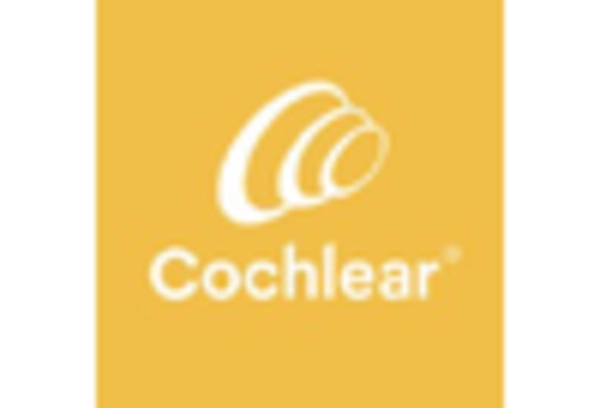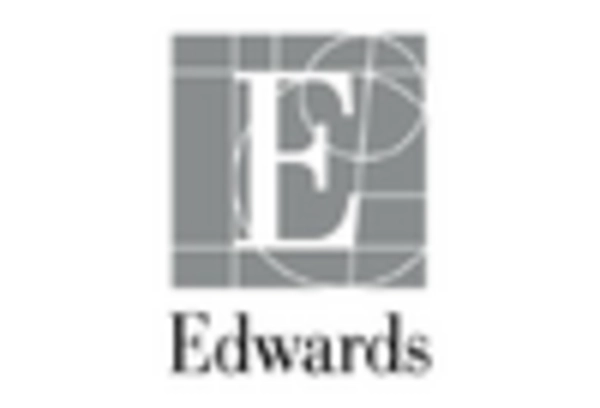Rising Healthcare Expenditure
Healthcare expenditure in the GCC region is on the rise, which is positively impacting the medical bionic-implant-artificial-organs market. Governments are increasingly allocating funds to enhance healthcare infrastructure and invest in advanced medical technologies. In 2025, healthcare spending in the GCC is projected to reach approximately $100 billion, reflecting a growth rate of around 8% annually. This increase in funding is facilitating the adoption of innovative medical solutions, including bionic and artificial organs, as healthcare providers seek to improve patient care and outcomes. Consequently, the medical bionic-implant-artificial-organs market is likely to benefit from this upward trend in healthcare investment.
Enhanced Regulatory Frameworks
The regulatory environment surrounding medical devices in the GCC is evolving, which is likely to influence the medical bionic-implant-artificial-organs market positively. Governments are implementing more robust regulatory frameworks to ensure the safety and efficacy of medical technologies. This includes streamlined approval processes for innovative products, which can reduce time-to-market for new bionic and artificial organs. As regulatory bodies become more supportive of technological advancements, manufacturers may find it easier to introduce their products to the market. This shift could lead to increased competition and innovation within the medical bionic-implant-artificial-organs market, ultimately benefiting patients and healthcare providers alike.
Increasing Demand for Organ Transplants
The medical bionic-implant-artificial-organs market is experiencing a surge in demand for organ transplants, driven by a growing population and an increase in organ failure cases. In the GCC region, the prevalence of chronic diseases such as diabetes and hypertension has led to a higher incidence of organ-related ailments. This trend is reflected in the rising number of patients on transplant waiting lists, which has increased by approximately 15% over the past few years. As a result, the need for innovative solutions, including bionic and artificial organs, is becoming more pronounced. The medical bionic-implant-artificial-organs market is thus positioned to address this urgent need, providing life-saving alternatives for patients who may otherwise face long wait times for donor organs.
Technological Innovations in Medical Devices
Technological advancements are playing a pivotal role in shaping the medical bionic-implant-artificial-organs market. Innovations such as 3D printing, biocompatible materials, and advanced robotics are enhancing the design and functionality of artificial organs. For instance, the introduction of 3D-printed bionic organs has the potential to reduce production costs by up to 20%, making these solutions more accessible to healthcare providers. Furthermore, the integration of artificial intelligence in monitoring and managing bionic implants is improving patient outcomes and operational efficiency. As these technologies continue to evolve, they are likely to drive growth in the medical bionic-implant-artificial-organs market, offering new possibilities for treatment and patient care.
Aging Population and Associated Health Issues
The aging population in the GCC is contributing to the growth of the medical bionic-implant-artificial-organs market. As life expectancy increases, the incidence of age-related health issues, including organ failure, is also rising. By 2025, it is estimated that over 20% of the GCC population will be aged 60 and above, leading to a higher demand for medical interventions. This demographic shift necessitates the development and implementation of advanced medical solutions, such as bionic and artificial organs, to address the unique health challenges faced by older adults. The medical bionic-implant-artificial-organs market is thus poised to expand in response to this demographic trend.

















Leave a Comment